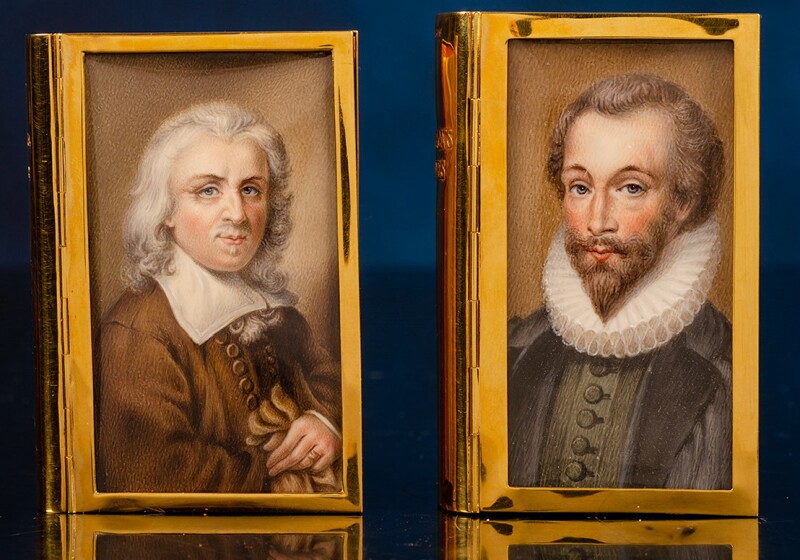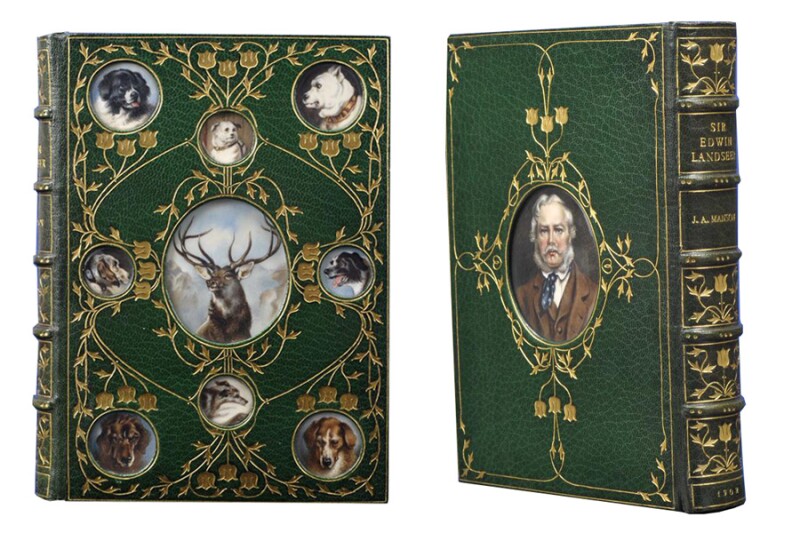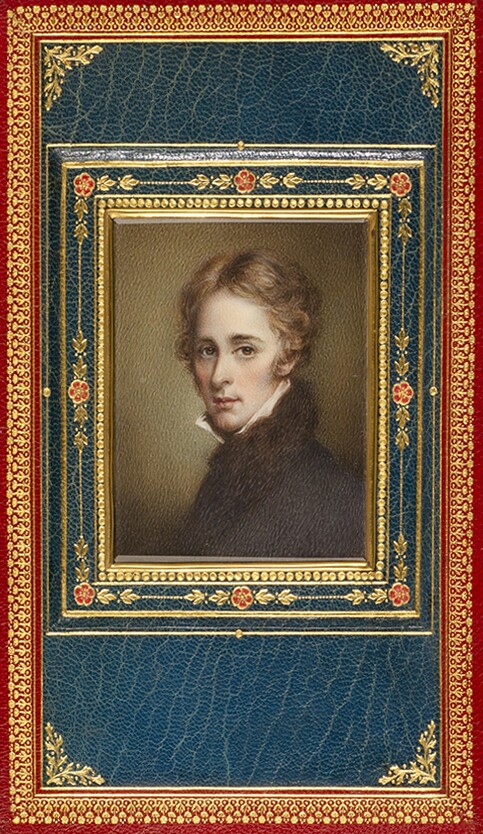We owe a debt of gratitude to an enterprising manager at the bookselling firm of Henry Sotheran and a Cornish-born artist for the remarkable book collecting phenomenon of Cosway bindings.
Sotheran’s was founded in 1761 and today you will find them near Piccadilly in the heart of London. At the start of the 20th century, J.H. Stonehouse, Sotheran’s managing director, thought books could be greatly embellished through the addition of miniature paintings and fine bindings.

His plan was to create books with beautiful miniature paintings inset into fine leather bindings. These stunning objects were named after Richard Cosway, the acclaimed English miniaturist portrait painter who worked in the Regency era alongside his wife Maria, another painter. To learn more, we spoke to David Brass, an antiquarian bookseller located in Calabasas, California, who is a member of both the ABA and ABAA. David specialises in Cosway bindings.
"Richard Cosway died in 1821,” said David. “He was famous for miniatures, tiny pieces of art, which were often so small they could be hung around someone’s neck in a locket. However, Richard Cosway has no connection to Cosway bindings.”
While the idea came from Stonehouse, the art came from Miss C.B. Currie, who is thought to have produced about one thousand miniature watercolor paintings in the style of Richard Cosway for use in book bindings. Caroline Billin Currie is an iconic figure in the world of antiquarian bookselling with everyone respectfully referring to her as Miss Currie. She is also known for her fore-edge paintings. Not much is known about Miss Currie. David revealed her actual name was Curry and she used Currie for her work.
“The first Cosway Bindings were apparently produced in 1901 or 1902 - a Sotheran catalogue issued for 1909/1910 uses the words ‘invented eight years ago,”’ said David. “The catalogue also said that nearly all the examples were sold as quickly as it was possible to produce them.

“True Cosway bindings contain one or more miniatures by Miss C.B. Currie. Stonehouse would select a book that had pages in good condition. The binding was going to be changed. The painting or paintings would represent something from the book, usually the author but it could be characters or illustrations. I sell them because I like them. I’ve seen so many over the years, hundreds of them.”
The finely painted miniatures were created on ivory and protected by glass and inset into the covers or doublures (inside covers). David singled out one particular Cosway binding as being particularly memorable - The Complete Angler by Izaak Walton, which had a solid gold binding and was part of a pair.

“They actually deserve to be handled because you need to turn them over and look inside to see everything about the book," said David. "Miniatures are often on the inside front or rear covers.”
David referred to true Cosway bindings because there are also Cosway-style bindings. So what’s the difference between a Cosway binding and a Cosway-style binding?
“Cosway bindings were usually elaborately bound by Rivière and Son, who was one of London’s top bookbinders, and have one or more hand-painted miniature on ivory by Miss C.B. Currie.

"Cosway-style bindings are similar but the miniatures are usually by other artists. These can also be bound by Rivière and Son but, from 1927 onwards, Bayntun-Rivière, Bayntun of Bath and Sangorski & Sutcliffe also produced bindings in this style.”
According to David, Stonehouse marketed his Cosway-bound books to booksellers in the United States or to American agents.
From 1913, the bindings were distinguished by a limitation statement on a colophon leaf (where a publisher's emblem or trademark is placed), which provides the number of the Cosway binding with the signatures of Stonehouse and Miss Currie. The gilt-stamped signatures are usually on the edge of the binding or the turn-ins, and are generally lettered: 'Bound by Riviére & Son from Designs by J. H. Stonehouse' and 'Miniatures by C. B. Currie.'
Competitors began copying the bindings soon after their introduction. The fashion for Cosway bindings faded after World War II although several binderies continued to produce them.


